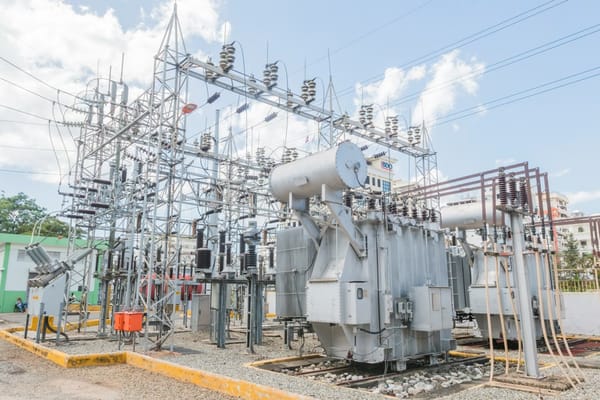Intro to NERC Compliance Management & Challenges
Learn about the hurdles in meeting NERC standards for the energy industry. From resource constraints to skill gaps, we explore how organizations are tackling these obstacles.

NERC Regulatory Compliance Challenges
In the ever-evolving landscape of the energy industry, the North America Electric Reliability Corporation (NERC) regulatory standards have emerged as crucial benchmarks for ensuring the reliability and security of the Bulk Electric System (BES). The implementation of NERC standards since 2007 has introduced a series of compliance obligations for various industry entities.
As your trusted advisor, Acumen is committed to keeping you up to date on your Regulatory Compliance needs. This article delves into the challenges posed by NERC regulatory compliance and highlights key strategies for addressing them effectively. In the upcoming sections of the series, Part 1 will provide guidance on building a robust reliability compliance program, with Part 2 outlining the fundamentals of the NERC Reliability Compliance Documentation Framework, and will conclude with, part 3, which will touch on compliance tools & systems that align with NERC standards.
Since the reliability standards became mandatory and enforceable, all entities with facilities (generating facilities, transmission facilities, and distribution facilities) that meet the NERC BES definition and their control centers have operational control of the BES facilities. These entities are subject to the applicable NERC Standards associated with their reliability service functions and planning and operating functions, as presented in the NERC Functional Model which defines the set of functions:

The introduction of the enforceable NERC standards has ushered in a substantial array of obligations for a diverse range of entities, including Transmission companies, Generation companies, Vertically Integrated Utilities and Independent Power Producers, (IPPs), some more than others depending on the size of the entity, the number of BES facilities and their associated reliability service functions and planning and operating functions.
In order to manage their regulatory obligations, it is important to have established an internal compliance department and program to manage the compliance adherence. This comprehensive approach encompasses a spectrum of activities designed to ensure adherence and alignment with NERC standards. These include, but are by no means limited to, the following essential components:
- Active participation in the NERC and Regional Entity (RE) meetings
- Involvement in NERC Standards drafting teams, when possible
- Offering valuable commentary on new standards being developed or modified
- Casting informed votes on new standards and changes to existing ones
- Vigilance in tracking the release of new standards, revisions, and retirements
- Diligent interpretation of standards to ensure a consistent understanding across all internal business units
- Implementation and management of Internal Controls
- Development of the required documentation, policies, procedures, programs, plans, processes, workflows and RSAWs
- Ensuring the systematic capture of evidence to demonstrate compliance
- Furnishing staff with essential training on the applicable NERC standards and associated requirements
- Active management of self-certifications, self reports, and regional audits
Ever since the NERC standards became obligatory and subject to enforcement, numerous ongoing challenges have arisen for entities striving to effectively manage their compliance responsibilities. These challenges persist as organizations work to fulfill their obligations and provide tangible demonstrations of their adherence to these standards. Here are instances of these formidable hurdles:
- No structure in place to manage the NERC and regional compliance obligations.
- Limited resources to manage their compliance obligations: Some of the smaller entities, that do not have the internal resources, or the budget to hire additional resources to manage compliance have taken on the additional work with the existing work force, without the proper priorities established. This results in some of the compliance tasks getting put at the bottom of their duties, which could result in potential non-compliance.
- Resources taking on the additional work with the existing workforce does result in some challenges, since the resources, either do not have the time due to their other operational and maintenance responsibilities or do not have the required skill set.
- The lack of organizational structure and oversight to ensure that the compliable obligations are being met.
- Staff turnover.
- New resources do not necessarily have the necessary skill sets required to manage the NERC compliance obligations and need to be trained which take time.
- Incorrect interpretation of the standard’s requirements which leads to potential non-compliance.
- For some of the larger entities, silos get established which results in inconsistencies between the various groups with regards to NERC compliance practices.
- Lack of communications between the various departments with NERC compliance obligations.
- Lack of NERC compliance overside by management.
- The evidence to be collected to demonstrate compliance not properly identified and therefore, not collected.
- No formal structure in place to manage the information and evidence to demonstrate compliance.
- Managing compliance is reactive and not pro-active.
- The lack of the proper internal controls.
In the section below, we connect these challenges to real-world scenarios that entities commonly encounter when dealing with NERC compliance. These scenarios offer a practical window into the hurdles organizations face, providing valuable insights into the complexities of NERC compliance management.
Scenario 1: Resource Constraints
Challenge: An entity, struggling with limited resources, finds it challenging to allocate dedicated personnel for NERC compliance tasks. The existing workforce is stretched thin, and compliance responsibilities often take a back seat.
Scenario 2: New Staff and Skill Gaps
Challenge: An entity subject to the NERC standards hires new personnel to manage NERC compliance. However, the new staff lacks the required skill set and understanding of NERC standards, leading to potential misinterpretation and non-compliance.
Scenario 3: Inconsistent Compliance Practices
Challenge: A large utility operates multiple facilities and control centers, resulting in silos and inconsistent compliance practices across different departments. This leads to varying interpretations of NERC standards and a lack of cohesive compliance efforts.
Scenario 4: Reactive Compliance Management
Challenge: An entity has been managing compliance reactively, often missing deadlines and struggling to keep up with changing standards. This reactive approach exposes the company to increased compliance risks.
Scenario 5: Lack of Oversight and Organizational Structure
Challenge: An entity lacks a centralized compliance oversight structure, resulting in inadequate coordination and adherence to NERC standards across its various generating facilities.
Scenario 6: Incomplete Evidence Collection
Challenge: A facility struggles to identify and collect the necessary evidence to demonstrate compliance with NERC standards.
To give you more insights into these challenges, Acumen has prepared the following series of blogs that provides insight into an overall NERC compliance framework to support a robust internal compliance program.
The upcoming blog post will be published within the next two weeks.
For the entities that have challenges in managing their NERC compliance obligations, Acumen offers the following services:
For more information, visit www.aesi-inc.com or to schedule a complimentary consultation with us, book below!





